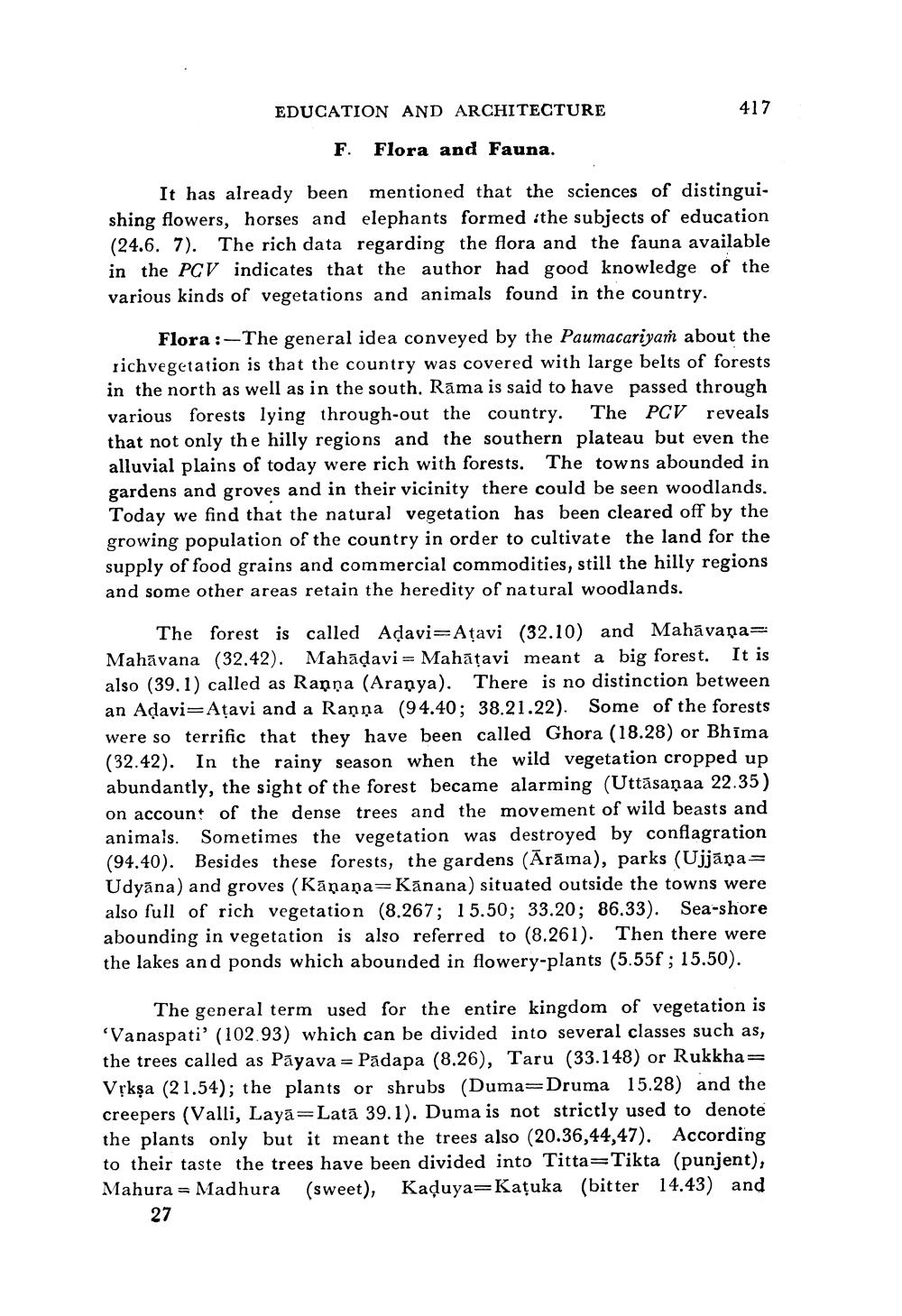________________
EDUCATION AND ARCHITECTURE
417
F. Flora and Fauna.
It has already been mentioned that the sciences of distinguishing flowers, horses and elephants formed the subjects of education (24.6. 7). The rich data regarding the flora and the fauna available in the PCV indicates that the author had good knowledge of the various kinds of vegetations and animals found in the country.
Flora :-The general idea conveyed by the Paumacariyam about the richvegetation is that the country was covered with large belts of forests in the north as well as in the south. Rāma is said to have passed through various forests lying through-out the country. The PCV reveals that not only the hilly regions and the southern plateau but even the alluvial plains of today were rich with forests. The towns abounded in gardens and groves and in their vicinity there could be seen woodlands. Today we find that the natural vegetation has been cleared off by the growing population of the country in order to cultivate the land for the supply of food grains and commercial commodities, still the hilly regions and some other areas retain the heredity of natural woodlands.
The forest is called Adavi=Atavi (32.10) and Mahāvana=: Mahāvana (32.42). Mahādavi= Mahātavi meant a big forest. It is also (39.1) called as Raņņa (Aranya). There is no distinction between an Adavi=Atavi and a Raņņa (94.40; 38.21.22). Some of the forests were so terrific that they have been called Ghora (18.28) or Bhima (32.42). In the rainy season when the wild vegetation cropped up abundantly, the sight of the forest became alarming (Uttāsaņaa 22.35) on account of the dense trees and the movement of wild beasts and animals. Sometimes the vegetation was destroyed by conflagration (94.40). Besides these forests, the gardens (Ārāma), parks (Ujjāņa= Udyāna) and groves (Kāņaņa=Kānana) situated outside the towns were also full of rich vegetation (8.267; 15.50; 33.20; 86.33). Sea-shore abounding in vegetation is also referred to (8.261). Then there were the lakes and ponds which abounded in flowery-plants (5.55f ; 15.50).
The general term used for the entire kingdom of vegetation is 'Vanaspati' (102.93) which can be divided into several classes such as, the trees called as Pāyava = Padapa (8.26), Taru (33.148) or Rukkha= Věkşa (21.54); the plants or shrubs (Duma=Druma 15.28) and the creepers (Valli, Layā=Latā 39.1). Duma is not strictly used to denote the plants only but it meant the trees also (20.36,44,47). According to their taste the trees have been divided into Titta=Tikta (punjent), Mahura = Madhura (sweet), Kaduya=Katuka (bitter 14.43) and
27




